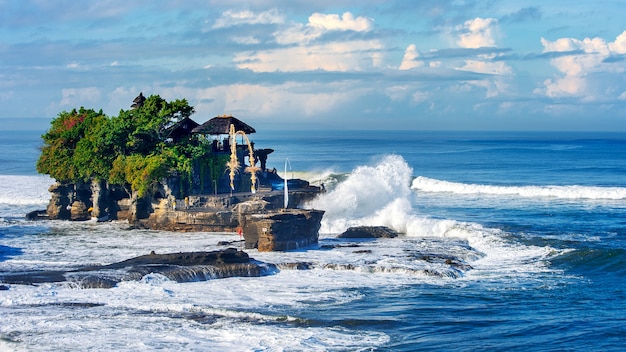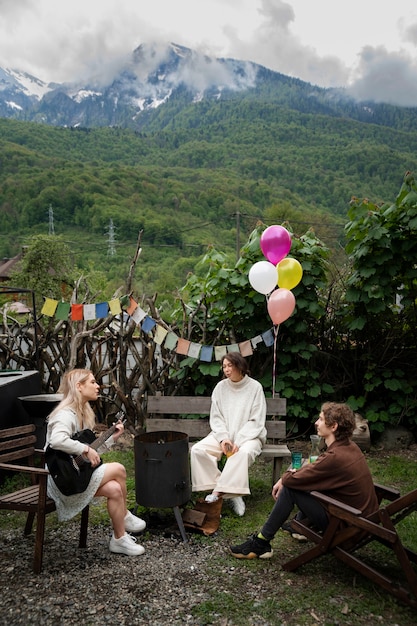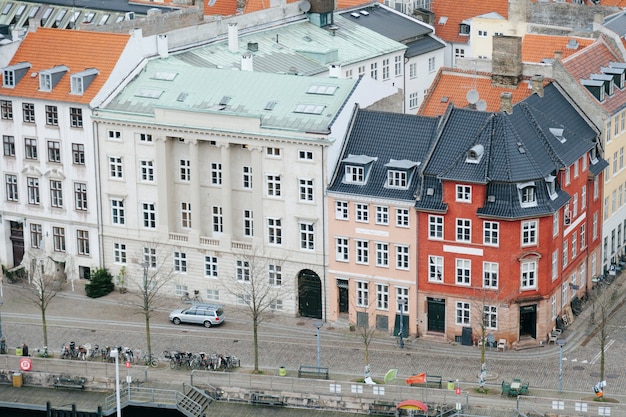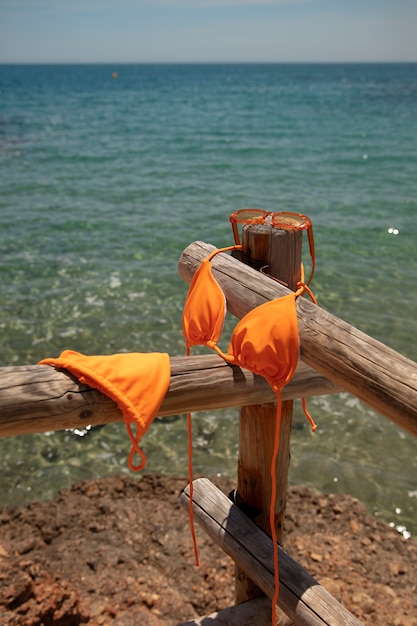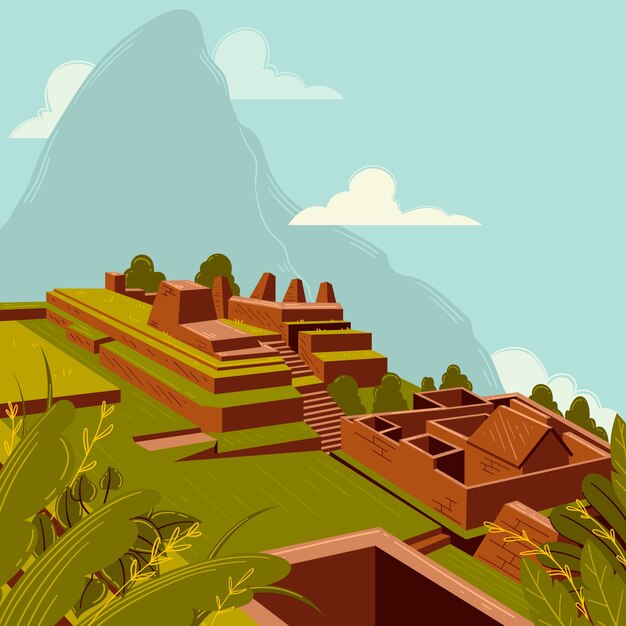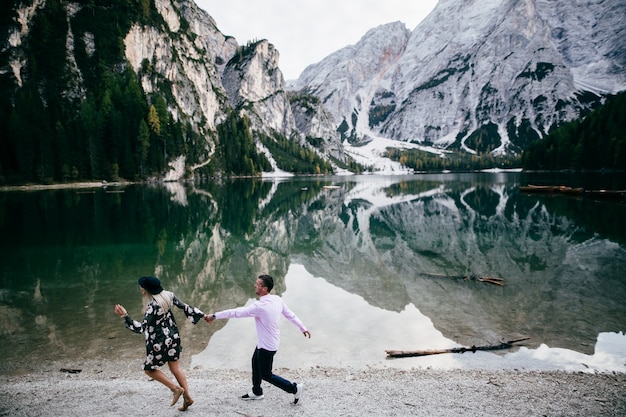
Every year, my friend Julia and I have a tradition of spending a few days hiking. Last September, we challenged ourselves in the Rosengarten range, part of the Dolomites in South Tyrol. I’ve already shared our experiences from Day 1, where we tackled gentler slopes, and Day 2, where we navigated a high pass through a rocky, lunar-like landscape. Now, let me tell you about Days 3 and 4, where we journeyed to the final mountain refuge across a grassy plateau and made a steep descent back to the valley, ending our adventure at the lovely Hotel Cyprianerhof.
After breakfast at Rifugio Bergamo, also known as Grasleitenhütte, we were ready to leave just as the sun began to light up the terrace. We had enjoyed our stay at this wood-paneled mountain lodge, originally built for mountaineers and filled with nostalgic books and old photographs. We took some departure photos with the owner, Hans, a robust, bearded mountain man who showed us pictures of a festival he hosts at the hut, where everyone dresses in period costumes.
As we descended the hill, we looked back at the rifugio, still in the shade and perched between two rock faces. It was incredible to think about how it was built in such a remote spot. The only sounds were the rushing mountain river behind the rifugio and the white streaks of airplane jets crisscrossing the sky above.
The sun warmed us as we walked along a balcony path with views of the valleys and pine forests below. We crossed another mountain river by hopping over boulders and continued upwards on the other side of the gully. The path became steeper, winding through a rocky landscape. We scrambled and climbed with the help of metal cables and ropes in the most exposed places. I was quite scared at this point, especially after a fall in Austria the previous year. I slowed down, breathed deeply, and took it one step at a time until we reached the top.
At the top, the path was easier, winding through a flower-filled meadow. We decided to detour to Rifugio Alpe di Tires, a beautiful modern refuge with a bright red roof, situated on a grassy plateau between two valleys. The terrace and café were full of walkers and climbers, and the stylish interior felt like a hip city hangout. As grey clouds gathered, our planned 10-minute stop turned into an hour due to a rain shower. We sipped raspberry lemonade while waiting for the rain to pass.
Once the blue skies reappeared, we set off on a path that skirted the mountain. Rifugio Alpe di Tires became a tiny toy house in the distance, easy to spot because of its red roof. As the path climbed higher, I worried about another vertical rock climb but was reassured when we passed walkers with their dogs. We reached a grassy plateau where blue flowers like larkspur were blooming. A fence with a gate indicated that cows were grazing nearby.
Beside the path was a large cairn of rocks, and from there, we could see Rifugio Bolzano, where we would spend the night. Although it seemed close, it took nearly two hours to reach it. After our climb, we took a 20-minute break for a snack and a drink. I took some photos while Julia lay on the grass, enjoying the views.
As we left our rest spot, the sky darkened, and rain started, turning the gravel path into sticky mud. We trudged along the path across the plateau, marked by white cairns, and arrived drenched at Rifugio Bolzano nearly two hours later. It was a relief to take off our muddy boots and wet waterproofs and enter the cosy, wood-paneled dining area. The place was full of families, with children playing games and relaxing before dinner. Rifugio Bolzano, built over 100 years ago, has 47 beds and a traditional atmosphere. We settled into our private room with wooden beds and a view of the mountain.
We were surprised to find no showers at the refuge, only communal washrooms. Despite this, the atmosphere was friendly, and we enjoyed a hearty dinner of mountain fare, including kaiserschmarrn pancakes for dessert.
By morning, the rain had passed, and the air was clear, revealing sunny views of the jagged Dolomites. From Rifugio Bolzano, we walked gently downhill across green pastures dotted with white standing stones, feeling like Hansel and Gretel following a trail. At the end of the plateau, we could see down into the valley, although it was hard to identify the villages below. Somewhere behind the ridges lay the luxurious Hotel Cyprianerhof, which we were eager to reach that evening.
The path became a narrow ribbon, zig-zagging steeply downwards towards the valley. Despite going downhill, the descent was challenging, with steep steps and slippery gravel. After a couple of hours, we reached a cross with a picnic table, where we took a break and ate some snacks. The worst of the descent was over, but we still had three hours to walk before reaching the hotel.
We walked along the slope through the forest, with the smell of cow dung and pine needles in the air. The forest was cool and damp, with moss around the tree roots. Along the trail, we saw wooden sculptures carved from fallen trees, including a giant mushroom and an eagle’s head. The path crossed streams channeled into wooden troughs where we could fill our water bottles. Through gaps in the trees, we could see the valley below and hear church bells and a brass band practicing.
The path eventually widened, leading us down to St Cyprian in the green valley, with the jagged peaks of the Dolomites rising in the distance. We took a ‘Before’ and ‘After’ photo upon arriving at Cyprianerhof, capturing our tired but thrilled expressions. After four days and three nights in the mountains, staying in simple accommodations with limited shower facilities, it was a treat to enter our room at Cyprianerhof. The luxurious natural fabrics, cosy faux fur throw, and huge bathroom were just as lovely as we remembered.
Soon, we transformed from wild mountain women into chic and sleek creatures, with freshly washed hair and clean clothes. We enjoyed a well-deserved aperitif on the lawn outside, toasting our success and endurance. We had earned the delicious meal and elegant surroundings that awaited us at Cyprianerhof.

